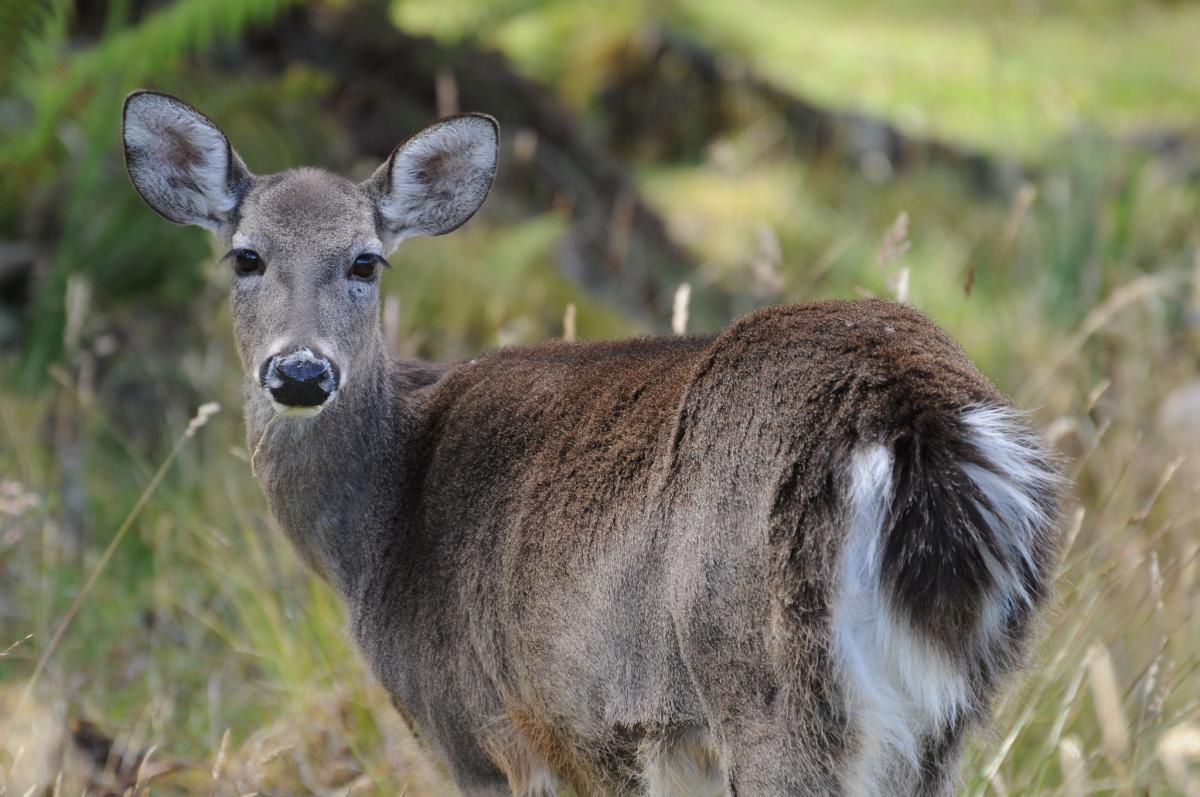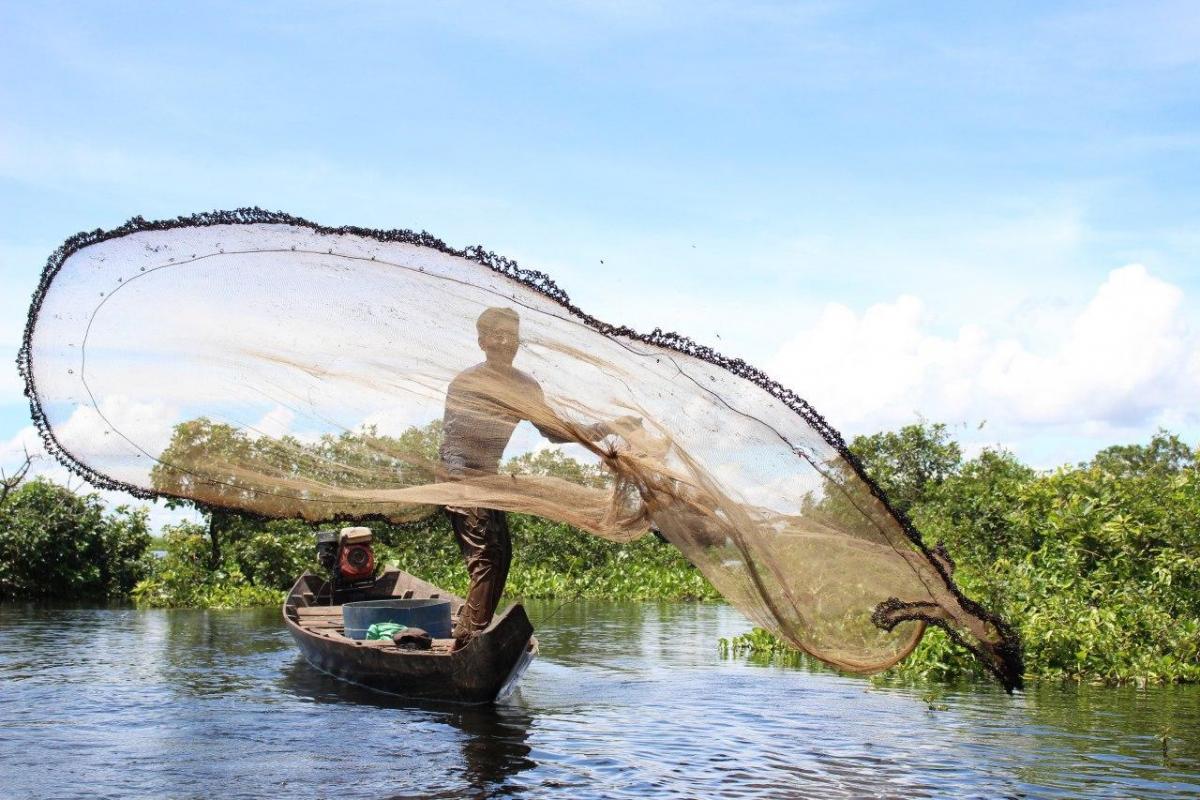New Funding to Tackle Biodiversity Crisis in Indo-Burma Hotspot - Small grants invest in the capacity of civil society to protect rare species
Bangkok, Thailand: A new portfolio of grants to protect the highly threatened biodiversity of the Indo-Burma region was announced today by IUCN and the Critical Ecosystem Partnership Fund (CEPF) to mark International Biodiversity Day on May 22, 2014.
The Indo-Burma region (made up of Viet Nam, Lao PDR, Cambodia, Thailand, Myanmar, and parts of southern China) is widely recognized as being of global importance for biodiversity. Also known as the Indo-Burma "Hotspot", the region is home to some of the world's most threatened primates, such as the Cat Ba Langur and Tonkin Snub-nosed Monkey, and enigmatic ungulates such as the rarely seen Saola. The region also provides the wintering grounds for globally threatened migratory birds such as the Spoon-billed Sandpiper and supports one of the richest freshwater fish fauna in the world. Despite its global significance, however, the biodiversity of Indo-Burma is also highly threatened.
“The rich diversity of plants and animals found in this region is under increasing pressure from human population growth, rapid economic development based on unsustainable use of natural resources and the large-scale, illegal trade in wildlife,” said Dr Scott Perkin, Head of the IUCN Asia Natural Resources Group and Manager of the CEPF Indo-Burma Regional Implementation Team. “There is no question that the region is experiencing a biodiversity crisis. These CEPF grants are an effort to work with civil society to find solutions that will help protect this rich repository of biodiversity and safeguard the many benefits that species and intact natural systems provide for human society.”
The implementation of the CEPF programme in the Indo-Burma region is being led by IUCN, International Union for Conservation of Nature, in partnership with the Myanmar Environmental Rehabilitation-conservation Network (MERN) and the Kadoorie Farm and Botanic Garden (KFBG). The funding is delivered as both small (<$20,000) and large (>$20,000) grants to civil society organizations – both NGOs and the private sector – to run projects that will build capacity and protect biodiversity in the area.
To date, CEPF and IUCN have issued calls for proposals in all six countries of the Indo-Burma Hotspot, reviewed over 330 applications, and are in the process of awarding approximately 70 grants to both international NGOs and local groups.
Some examples of the grants recently awarded include:
Birdlife International: Securing the Long-Term Future of Vulture Conservation in Cambodia: A project seeking to conserve three critically endangered species of vulture (White-rumped Vulture, Red-headed Vulture and Slender-Billed Vulture) at seven priority sites in Cambodia through research, community participation, and the establishment of a Working Group for Vulture Conservation.
Global Wildlife Conservation: Finding Saola, Saving Saola: A project seeking to improve understanding of one of the most secretive species in the world, using exciting new research techniques at four priority sites in Lao PDR and Vietnam.
King Mongkut's University of Technology Thonburi: Conservation of Saola and other endemic species in Lao PDR: A project seeking to conserve Saola in Bolikhamxay Province through focused camera trapping, ongoing engagement with local communities, and building local capacity to implement future conservation work.
Fauna & Flora International: Promoting a Community-Based Limestone Biodiversity Conservation Network in Guangxi, China: Engaging local communities in biodiversity conservation through improved management of five protected areas, restoration of the habitat of the Cao Vit Gibbon, and the creation of a Community Protected Areas consortium.
Living River Siam Association: Strengthening fish conservation for food security in the Ing River basin, Thailand: A project seeking to better protect the natural resources (including fish stocks) of the Ing River basin of northern Thailand by strengthening community organizations and establishing community-managed Fish Conservation Zones.
FISHBIO: Supporting community management to help protect endangered Probarbus fishes in Lao PDR: A project seeking to conserve Jullien’s Golden Carp and Thicklipped Barb in the Mekong River through the establishment and management of community-managed Fish Conservation Zones at three sites between Luang Prabang and Vientiane.
About IUCN
IUCN, International Union for Conservation of Nature, is the world’s oldest and largest global environmental organization, with more than 1,200 government and NGO Members and almost 11,000 volunteer experts in some 160 countries. IUCN helps the world find pragmatic solutions to our most pressing environment and development challenges. IUCN’s work focuses on valuing and conserving nature, ensuring effective and equitable governance of its use, and deploying nature-based solutions to global challenges in climate, food and development. IUCN supports scientific research, manages field projects all over the world, and brings governments, NGOs, the UN and companies together to develop policy, laws and best practice. www.iucn.org
About CEPF
The Critical Ecosystem Partnership Fund is a joint initiative of l'Agence Française de Développement, Conservation International, the European Union, the Global Environment Facility, the Government of Japan, the MacArthur Foundation and the World Bank. A fundamental goal is to ensure civil society is engaged in biodiversity conservation. www.cepf.net
For more information:
Jane Lawton, Head, Asia Communications, IUCN
Mobile: (0)81 831 9006 jane.lawton@iucn.org





